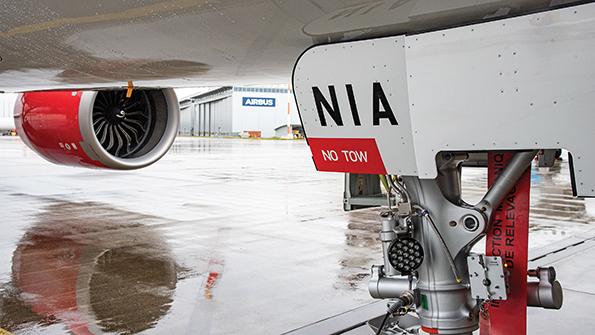
Operators affected by a new mandate to inspect CFM Leap 1A engines based on the number of departures from a subset of airports are expressing concern that the parameters will challenge their standard record-keeping protocols and could make compliance more difficult.
The inspections, mandated in a Jan. 19 European Union Aviation Safety Agency (EASA) airworthiness directive (AD) and proposed in a similar draft AD issued by the FAA, target cracking in Leap 1A high-pressure turbine (HPT) rotor Stage 1 blades and stator nozzles. The mandate requires operators of Leap-1A-powered Airbus A320neo-family aircraft to start a recurrent inspection program after engines have accumulated 800 departures from specific airports in the Middle East and North Africa (MENA). CFM recommended the program in a December 2021 service bulletin.
“Occurrences of cracking of affected parts have been reported on engines operated extensively in the MENA region,” the EASA AD says. “This condition, if not detected and corrected, could lead to failure of the affected parts.”
EASA’s directive, based on the CFM bulletin, does not discuss the problem’s source. The FAA’s proposed AD, also based on the CFM instructions, confirms that a buildup of dust is behind the issue.
“After investigation, the manufacturer determined that engines operating in the MENA region are susceptible to accelerated HPT rotor Stage 1 blade deterioration and airfoil distress due to the buildup of dust,” the FAA says. The agency adds that two in-flight shutdowns were linked to cracked HPT Stage 1 rotor blades caused by the problem.
CFM’s original instructions targeted engines that flew at least 50% of their departures from MENA airports. But the parameter was changed to 800 total departures. EASA’s mandate is based on CFM’s latest recommendations.
Several operators expressed concern that the requirement to track MENA-specific operations, instead of a more common metric such as total hours or cycles, is burdensome.
“It is very difficult to control how many [departures] have been performed from MENA-region airports and to individualize those on an engine-by-engine basis in our airworthiness control system,” Iberia told EASA in comments on a draft of the directive.
“Our approved system is not able to count the departures from a list of countries so it can only be done manually, but it cannot be done in real time,” added Cathay Pacific.
Both airlines suggested more basic thresholds be set to ensure appropriate inspections are being done without having to tally up subsets of operations. Iberia said its 12,361 Leap-1A-powered mainline and Iberia Express departures in 2021 included just 74, or less than 1%, from the MENA region. “Due to the criteria . . . we would need to be constantly monitoring, on an engine-by-engine basis, the different takeoffs each engine has and will have in the future,” the Spanish carrier added.
EASA said tracking departures from the specific airports—which CFM lists in its service bulletins—is necessary.
“Available data confirm that all engines having achieved 800 departures from the MENA region have to be inspected, irrespective of the percentage of departures from the MENA region versus total departures,” the regulator said.
Intervals for follow-up inspections vary based on engine thrust rating. Those with ratings below 29,000 lb. must be reinspected every 300 cycles, regardless of where they occurred, while higher-rated engines must be re-checked every 150 cycles.
Aviation Week Fleet Discovery shows about 80 CFM-powered A320neo family aircraft in the MENA region out of 1,100 worldwide. The EASA and proposed FAA directives only affect operators from those jurisdictions.
The issue also may show up on 737 MAXs powered by Leap 1Bs, which have an HPT blade design similar to the 1A. The 737 MAX’s grounding from March 2019 to December 2020 means the aircraft have not accumulated hours and cycles as quickly as their Airbus counterparts.
CFM said it is working to understand the Leap 1A issue’s “root cause.”
It declined further comment.




Comments